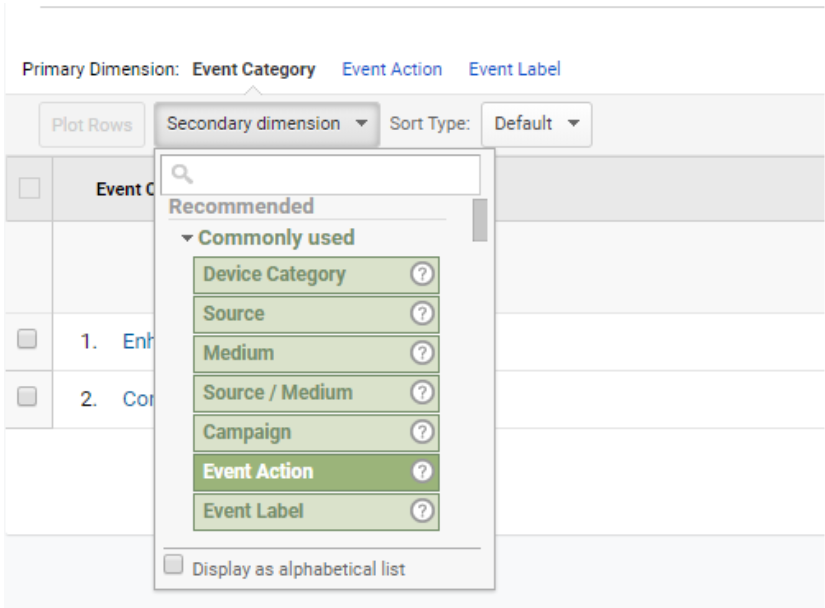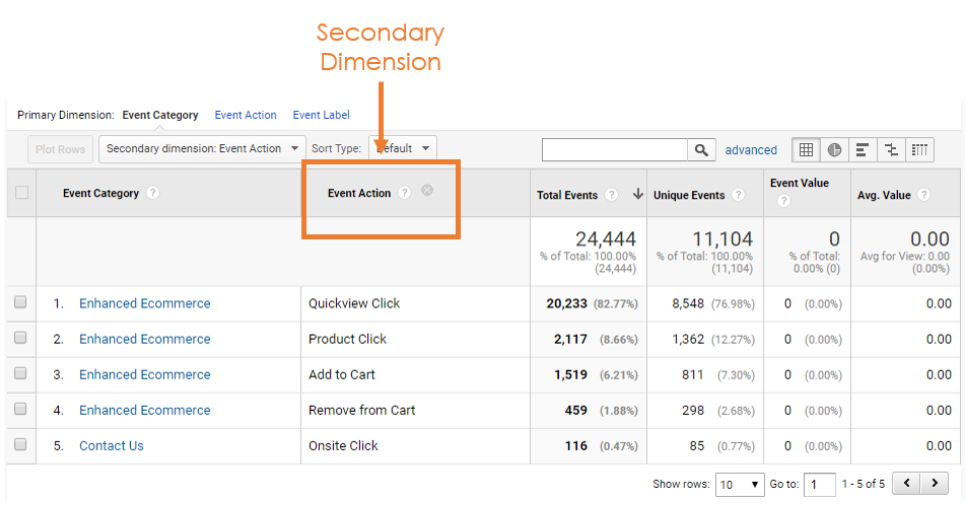Advanced Analytics Techniques: Leveraging Google Analytics Secondary Dimension
Wiki Article
Optimizing Your Digital Method With Second Measurement Analytics: a Comprehensive Guide
In the realm of digital technique, the usage of secondary dimension analytics can offer an extensive understanding of customer behavior and site performance. By diving deeper right into the layers of information beyond the primary metrics, services can uncover beneficial insights that lead the way for strategic decision-making and boosted performance. From untangling the details of individual interactions to fine-tuning marketing projects, the potential for leveraging second measurements is large. As we navigate via the ins and outs of this detailed guide, we are readied to untangle the techniques that can transform digital methods and thrust organizations towards unprecedented success.Understanding Additional Dimension Analytics
Recognizing Additional Measurement Analytics offers a crucial insight right into the advanced logical tools used in modern-day data evaluation techniques. These analytics delve much deeper than primary dimensions, using a more extensive understanding of information patterns and fads. By incorporating secondary dimensions, experts can segment and filter data to reveal concealed understandings that may not be noticeable with primary analysis alone.Additional Measurement Analytics makes it possible for a more granular assessment of information by presenting added parameters that can be applied to the primary measurements - secondary dimension. This approach enables for an extra nuanced analysis of various data points, resulting in a more complete evaluation of complex datasets
In Addition, Secondary Dimension Analytics plays a significant role in improving data visualization methods. By integrating second measurements right into aesthetic depictions, such as charts or graphes, analysts can offer data in an extra useful and comprehensive way, making it simpler for stakeholders to make and realize key understandings educated decisions based on the information provided.

Implementing Secondary Measurements Efficiently
Using additional dimensions strategically enhances the deepness and precision of data analysis processes, allowing for more specific understandings and notified decision-making. When executing secondary measurements properly, it is crucial to initial determine the essential metrics that align with your details objectives and goals. By picking one of the most appropriate secondary measurements, such as demographics, habits, or technology, you can customize your analysis to extract meaningful understandings.Additionally, arranging and structuring your additional dimensions in a sensible way within your analytics system can simplify the data analysis process. secondary dimension. This entails categorizing measurements based on their connections and significance to the key metrics being evaluated. Developing custom-made records or dashboards that include these additional dimensions can likewise facilitate a much more comprehensive understanding of individual communications and habits
In addition, on a regular basis evaluating and readjusting your secondary measurements based on the progressing needs of your digital approach is important for keeping the relevance and efficiency of your information evaluation efforts. By continually optimizing the usage of second dimensions, you can optimize the energy of your analytics tools and drive notified decision-making within your company.
Studying Data for Actionable Insights

To start the procedure of assessing information click for info for workable understandings, it is vital to establish clear purposes and vital efficiency indications (KPIs) that straighten with the company's objectives. By specifying what success resembles for the specific metrics being evaluated, it becomes simpler to determine significant patterns and trends that can inform decision-making.
Furthermore, utilizing tools such as segmentation and comparison evaluation can give added context to the information, enabling for more nuanced insights to be drawn. By breaking down information right into smaller sized, a lot more workable subsets, companies can reveal surprise possibilities and areas for improvement that may not appear when looking at the information all at once.
Optimizing Digital Technique With Findings
Enhancing electronic approaches with actionable understandings obtained from data evaluation is vital for accomplishing optimal efficiency in today's affordable landscape. Once useful findings have actually been drawn out from the information, the next step is to leverage these insights to optimize digital methods successfully. One essential aspect of this optimization procedure is the identification of fads and patterns that can direct decision-making and source allowance.By evaluating the information findings, businesses can identify areas of stamina and weakness within their digital strategy. This info can then be utilized to refine advertising campaigns, improve customer experience, and drive general efficiency renovation. For circumstances, if the go to website data exposes a certain demographic team that is very engaged with particular kinds of content, services can tailor their methods to far better target and deal with this target market sector.
Furthermore, enhancing digital method with findings likewise involves constant tracking and examination to make certain that the applied adjustments are generating the desired results. By iteratively refining strategies based on data-driven understandings, organizations can remain in advance of the competitors and adjust to the vibrant electronic landscape successfully.
Determining Success and Iterating
Determining success in digital technique implementation involves evaluating essential performance indicators to determine the performance of methods and strategies deployed. This evaluation is essential in identifying the impact of you could try this out the electronic efforts on the overall business purposes. By tracking metrics such as web site traffic, conversion rates, click-through prices, and interaction levels, organizations can examine the performance of their electronic projects and make data-driven decisions for renovation.As soon as the data has been accumulated and evaluated, it is necessary to repeat on the techniques based on the understandings acquired. This iterative procedure includes making changes to the electronic techniques to maximize efficiency continuously. By identifying what is functioning well and what needs renovation, companies can improve their digital approach to improve outcomes. This intermittent method of gauging, evaluating, and iterating is basic to making best use of the efficiency of electronic initiatives and making sure that they align with the company's goals and objectives. Ultimately, constant surveillance and refinement are essential to remaining affordable in the ever-evolving digital landscape.
Final Thought
In verdict, including second measurement analytics into your digital strategy can provide valuable understandings and boost decision-making. By efficiently implementing and analyzing information, services can enhance their digital approaches for success.Recognizing Additional Dimension Analytics provides a crucial understanding into the advanced logical tools made use of in modern data analysis techniques. These analytics delve much deeper than primary measurements, providing a more thorough understanding of data patterns and patterns. By incorporating second measurements, experts can section and filter data to reveal surprise understandings that may not be evident with primary evaluation alone.
Making use of second dimensions purposefully enhances the depth and precision of information analysis procedures, permitting for extra exact understandings and notified decision-making.Furthermore, arranging and structuring your second dimensions in a sensible manner within your analytics system can improve the information interpretation process.
Report this wiki page